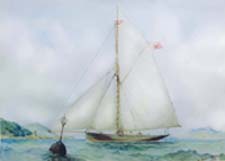Castleward House and Estate.In County Down.
|
||||||||||
Castle Ward. |
||||
Early in the 18th century times were more peaceful, and obviously the Wards more affluent, a house in the Queen Anne style was built near the Temple water, this house was demolished in the mid nineteenth century, little is known of this apparently the only record is a small drawing on a map of the area. In the 1760's the present house was built. The house and estate which In the farm yard is a water driven corn mill as well as a saw mill, the corn mill is run occasionally for demonstration purposes. Also on the estate near the village of Strangford is a touring caravan park If you would like to spend a pleasant day in the country then Castleward is well worth a visit, but you may find it difficult to see all that it has to offer in one day. The present The text below is from the writings of Mrs Delaney, wife of Dean Delaney who lived in Mountpanther House, Dundrum County Down, who visited many of the great houses in the locality. "Mr Ward is building a fine house but the scene about it is so uncommonly fine it is a pity it should not be judiciously laid out. He wants taste and Lady Anne Ward, his wife, is so whimsical that I doubt her judgment. If they do not do too much they can't spoil the place, for it hath every advantage from nature that can be desired." The couple had three sons and four daughters, their differences may have encompassed areas other than architecture, or perhaps she found Irish country life dull, whatever the reason they parted, she choosing to reside in Bath England where she died in 1798.. The house stands on a hill overlooking
the Some of the stone for building the
house were imported from Somerset using Lord Bangor's own ship which
discharged at the quay beside the farmyard. Coal was also imported here
for making gas which was used to illuminate the house. The remains of
the building which housed the gas plant are to be seen near the quay
close to the farmyard. Along the An examination of a map of the area shows the road from Castle Ward to the seaside town of Killough is almost straight. This road was built to transport the lead mined at Castleward and perhaps also agricultural produce to the port of Killough which had been developed by the Ward's. In the late 1900's the National Trust completely re roofed the house, scaffolding was erected around and over the house, this was then clad with tin, outwardly transforming it, temporally from a country mansion to an industrial building, replacement slates were specially imported from Wales to match the originals. The Hubert it could be said came with the estate, his accumulated knowledge providing a valuable insight into how the property had previously been run. He had many stories to tell of estate life, one concerned a house maids, who's party piece was to walk around the parapet wall surrounding the roof. Hubert was present when Maxwell Ward was buried in a lead lined coffin in Strangford Lough. The image on the left shows the stone stairs from the kitchen and work area to the house, worn by generations of toiling servants long forgotten. |
||||
|
|
The Temple Water.
|
||||
|
Judge
Michael Ward is responsible for the The temple pictured below was built
in 1750 for Lady Anne Ward, its function simply a garden In the mid eighteen hundreds it was enlarged and converted into a house for the head gardener, its proximity to the walled garden being an advantage. Beside the Temple Water Nearby is the Ice House, in the winter ice was taken from the lake and stored in this between layers of straw. Prior to the introduction of refrigeration many of the large houses of Ireland had ice houses on their estates, these were usually underground structures in locations shaded from the sun. In mild winters when no local ice was available often ice was imported from Scandinavia. The
last The image When Maxwell died he was buried in a lead lined coffin in Strangford Lough. Just to the north of Castleward House is an area known as Audleystown, it derives its name from Audleys Castle the Audleys were a Norman family who came to Ulster with John de Courcy, on a hill a little to the north of the castle once stood a small village, today all that remains of the village are a few stone walls and a well on the north eastern side of the hill, it could be said with some justification that the residents of Audleystown were victims of ethnic cleansing, read more here. Watch several video's of Castleward.
|
||||
|
|


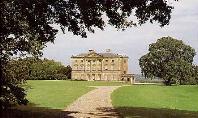
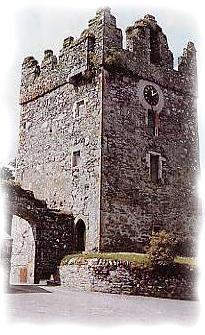 extends
to some 800 acres ( 324 ha) is owned and administered by the National
Trust. They received the property from the Ulster government who had
taken it in lieu of death duties. The house and grounds are open to
the public. There is a second hand book shop in the stable yard and
many events are organised throughout the year, the most notable of which
is the Castle Ward opera held each summer.
extends
to some 800 acres ( 324 ha) is owned and administered by the National
Trust. They received the property from the Ulster government who had
taken it in lieu of death duties. The house and grounds are open to
the public. There is a second hand book shop in the stable yard and
many events are organised throughout the year, the most notable of which
is the Castle Ward opera held each summer. 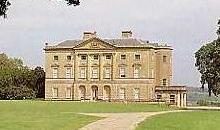 house is remarkable
because of its mix of architectural style, resulting from the conflicting
tastes of the first Viscount and his wife. He preferring the Paladin
and she the Strawberry Hill Gothic which was just becoming fashionable
at the time, the house is said to have cost £40,000, it is not
known who the architect was, as no drawings have survived..
house is remarkable
because of its mix of architectural style, resulting from the conflicting
tastes of the first Viscount and his wife. He preferring the Paladin
and she the Strawberry Hill Gothic which was just becoming fashionable
at the time, the house is said to have cost £40,000, it is not
known who the architect was, as no drawings have survived..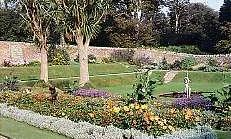 narrows
of
narrows
of  shore
to the East of the farmyard there was a lead mine all that remains today
is a small building used to house the explosives.
shore
to the East of the farmyard there was a lead mine all that remains today
is a small building used to house the explosives. 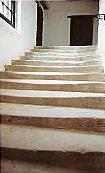 late Hubert
McGreavy who was employed at Castle Ward by the National Trust, was
previously one of the Ward's family retainers.
late Hubert
McGreavy who was employed at Castle Ward by the National Trust, was
previously one of the Ward's family retainers.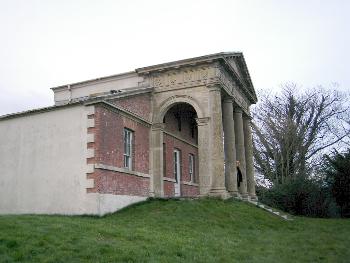 Temple
Water it was dug in 1728, and was designed to complement the Queen Anne
house which stood nearby. Features like this were popular with land
owners at the time, they were sometimes referred to as canals, apparently
there was a second canal running at right angles to the present one.
Water from the lake is taken via an underground culvert to the farmyard
where it is used to power the corn mill, and previously the saw mill
also.
Temple
Water it was dug in 1728, and was designed to complement the Queen Anne
house which stood nearby. Features like this were popular with land
owners at the time, they were sometimes referred to as canals, apparently
there was a second canal running at right angles to the present one.
Water from the lake is taken via an underground culvert to the farmyard
where it is used to power the corn mill, and previously the saw mill
also. 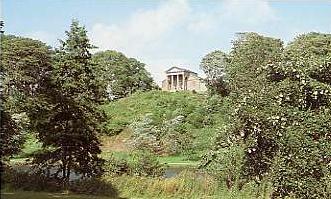 retreat,
this type of classical summer houses were popular with land owners who
were sufficiently well endowed financially to afford them, they also
served to make a statement of social standing.
retreat,
this type of classical summer houses were popular with land owners who
were sufficiently well endowed financially to afford them, they also
served to make a statement of social standing. 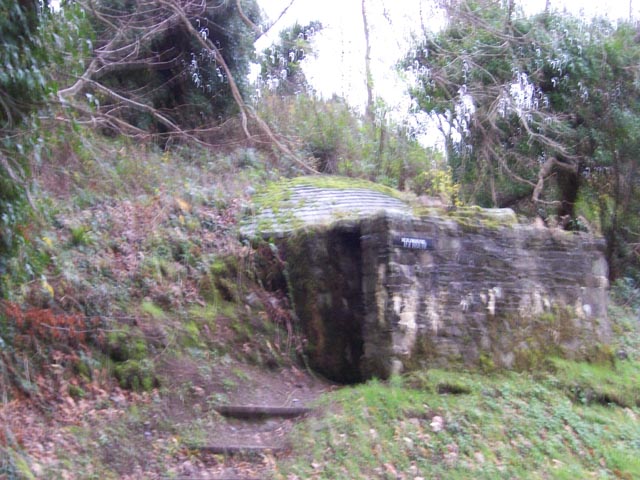 is the walled garden this was built by the third Viscount in 1830 on
a site that had previously been an orchard. The garden once contained
greenhouses and supplied fresh flowers and vegetables for the house,
the garden was in use up until about 1950.
is the walled garden this was built by the third Viscount in 1830 on
a site that had previously been an orchard. The garden once contained
greenhouses and supplied fresh flowers and vegetables for the house,
the garden was in use up until about 1950.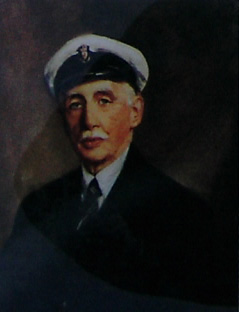 member of the ward family to live in the house was Maxwell Ward, he
was a man who had little time for farming and estate management, preferring
to spend his time sailing in his yacht Bonito which was built in 1883
by his father Henry 5th Viscount Bangor.
member of the ward family to live in the house was Maxwell Ward, he
was a man who had little time for farming and estate management, preferring
to spend his time sailing in his yacht Bonito which was built in 1883
by his father Henry 5th Viscount Bangor.